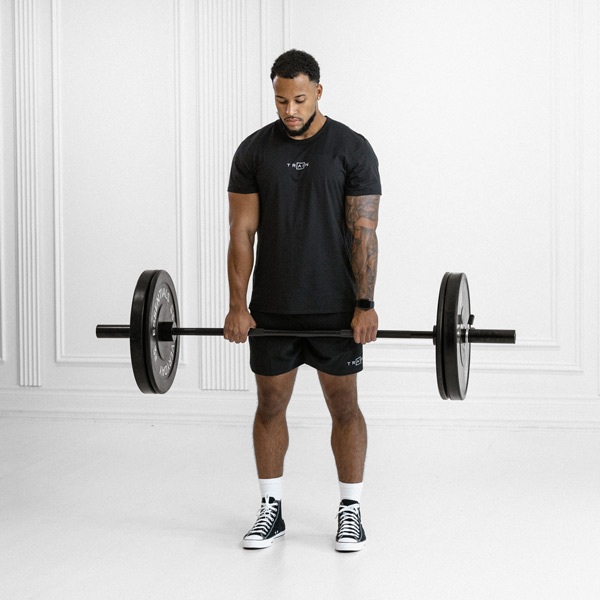Trap Bar Shrug
 Auto Detected
Auto DetectedTrap bar shrug isolates the upper trapezius to build strength and size in the upper back; uses neutral grip for comfort and greater range of motion compared to barbell shrugs.
About Exercise
Equipment
Trap Bar
Difficulty
2/5 • Beginner
Primary Muscle Groups
Traps
Secondary Muscles
Forearms, Shoulders
Popularity Score
7
Goals
Training Style
Setup Requirements
Requires Rack
No
Requires Bench
No
Requires Spotter
No
Space Needed
Small
Noise Level
Low
Muscle Breakdown
View Muscle MapTraps
10/10Upper Traps, Mid Traps
Forearms
5/10Flexors
Shoulders
3/10Rear Delts
Programming
Typical Rep Range
8-15 reps
Rest Between Sets
60-90 seconds
How to Perform
Load the trap bar evenly and stand inside it with feet shoulder-width apart. Grip the neutral handles, stand tall with knees slightly bent, spine neutral, and shoulders back.
- Inhale and brace your core.
- Elevate shoulders straight up toward ears, keeping arms extended.
- Squeeze trapezius at the top and hold briefly.
- Exhale and lower shoulders slowly to full stretch.
- Repeat for reps, maintaining control.
Coaching Tips
Form Cues
- Shrug straight up
- Squeeze at top
- No shoulder rolling
- Keep arms straight
- Full stretch down
Breathing
Inhale during the lowering phase and exhale as you elevate your shoulders.
Tempo
2-1-2
Range of Motion
Elevate shoulders until they touch ears; lower until shoulders are fully depressed below neutral position.
Safety
Safety Notes
- Avoid heavy loads if shoulder or neck pain exists
- Warm up shoulders before heavy sets
- Stop if trapezius tendinitis symptoms appear
- Maintain neutral spine to protect back
- Use straps if grip fails before traps
Spotting
Spotting not typically needed; use rack safeties for heavy sets to catch drops.
Common Mistakes
- Using momentum to lift
- Rolling shoulders forward or back
- Letting head jut forward
- Gripping too tightly causing tension
- Incomplete range of motion
When to Avoid
- Acute shoulder impingement
- Neck strain or pain
- Recent trapezius injury
Flexibility Needed
- Adequate shoulder elevation range
- Neutral spine mobility
Build Up First
- Basic grip strength
- Proper standing posture
Also known as
Hex Bar Shrug
Found this helpful?
Share your thoughts or help us improve this guide.
Similar Exercises

Barbell Shrug

Barbell, Plates
Traps

Barbell Behind Back Shrug
Barbell
Traps

EZ-Bar Shrug
EZ Bar, Plates
Traps

Barbell Overhead Shrug
Barbell, Squat Rack
Traps

Trap Bar Deadlift

Trap Bar, Plates
Quads, Glutes

Resistance Band Shrug
Bands
Traps

Upper Trapezius Stretch
Bodyweight
Traps

Resistance Band Trap Bar Deadlift
Trap Bar, Bands
Glutes

Machine Shrug
Shrug Machine
Traps

Dumbbell Shrug

Dumbbells
Traps


subscribe to our newsletter
Contact Us
hello@trainfitness.aiFind Us
130 Spadina Avenue, Toronto,
Ontario, M5V 0H4, Canada
©2025 All Rights Reserved
